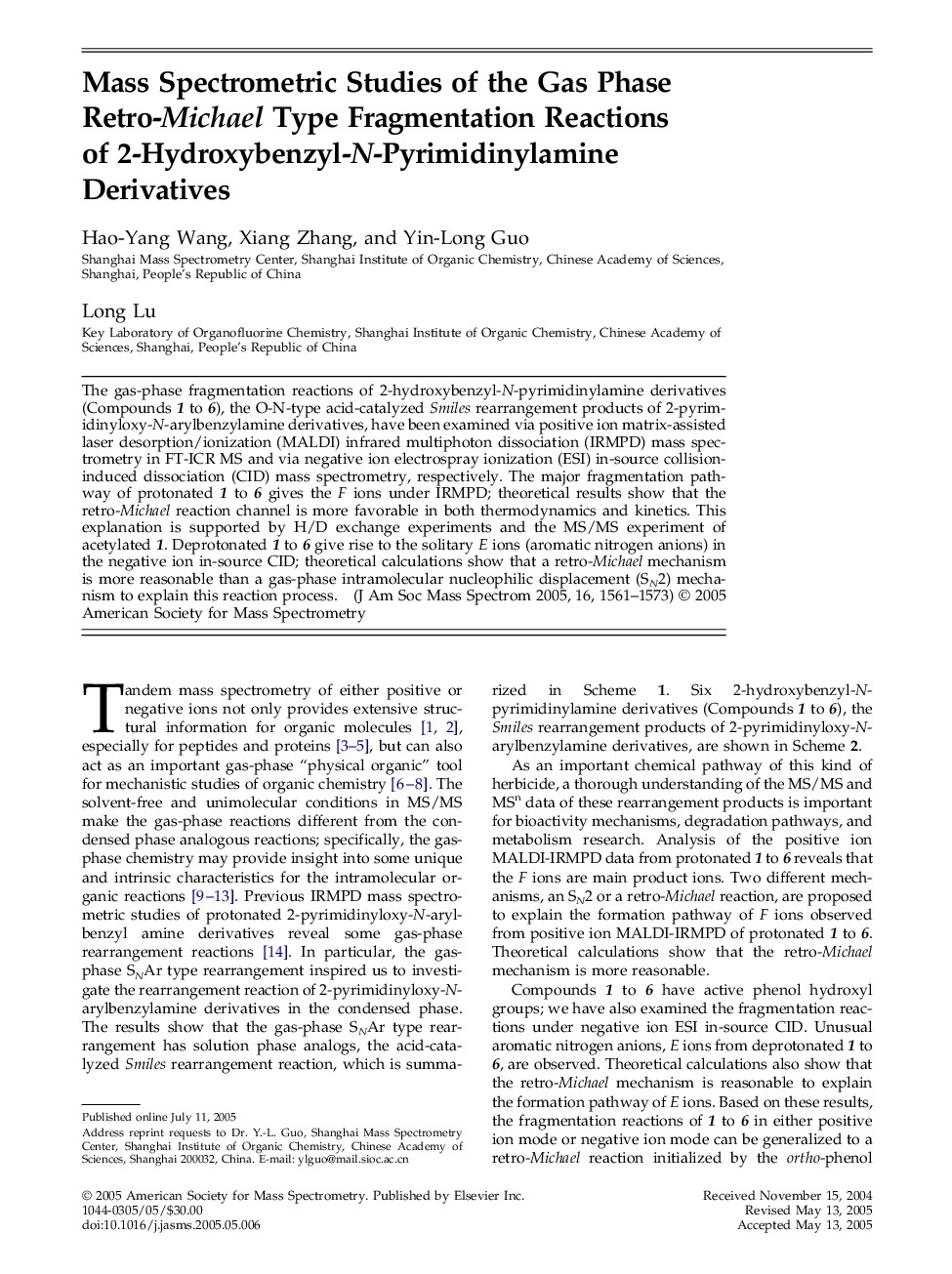| Article ID | Journal | Published Year | Pages | File Type |
|---|---|---|---|---|
| 10546996 | Journal of the American Society for Mass Spectrometry | 2005 | 13 Pages |
Abstract
The gas-phase fragmentation reactions of 2-hydroxybenzyl-N-pyrimidinylamine derivatives (Compounds 1 to 6), the O-N-type acid-catalyzed Smiles rearrangement products of 2-pyrimidinyloxy-N-arylbenzylamine derivatives, have been examined via positive ion matrix-assisted laser desorption/ionization (MALDI) infrared multiphoton dissociation (IRMPD) mass spectrometry in FT-ICR MS and via negative ion electrospray ionization (ESI) in-source collision-induced dissociation (CID) mass spectrometry, respectively. The major fragmentation pathway of protonated 1 to 6 gives the F ions under IRMPD; theoretical results show that the retro-Michael reaction channel is more favorable in both thermodynamics and kinetics. This explanation is supported by H/D exchange experiments and the MS/MS experiment of acetylated 1. Deprotonated 1 to 6 give rise to the solitary E ions (aromatic nitrogen anions) in the negative ion in-source CID; theoretical calculations show that a retro-Michael mechanism is more reasonable than a gas-phase intramolecular nucleophilic displacement (SN2) mechanism to explain this reaction process.
Related Topics
Physical Sciences and Engineering
Chemistry
Analytical Chemistry
Authors
Hao-Yang Wang, Xiang Zhang, Yin-Long Guo, Long Lu,
